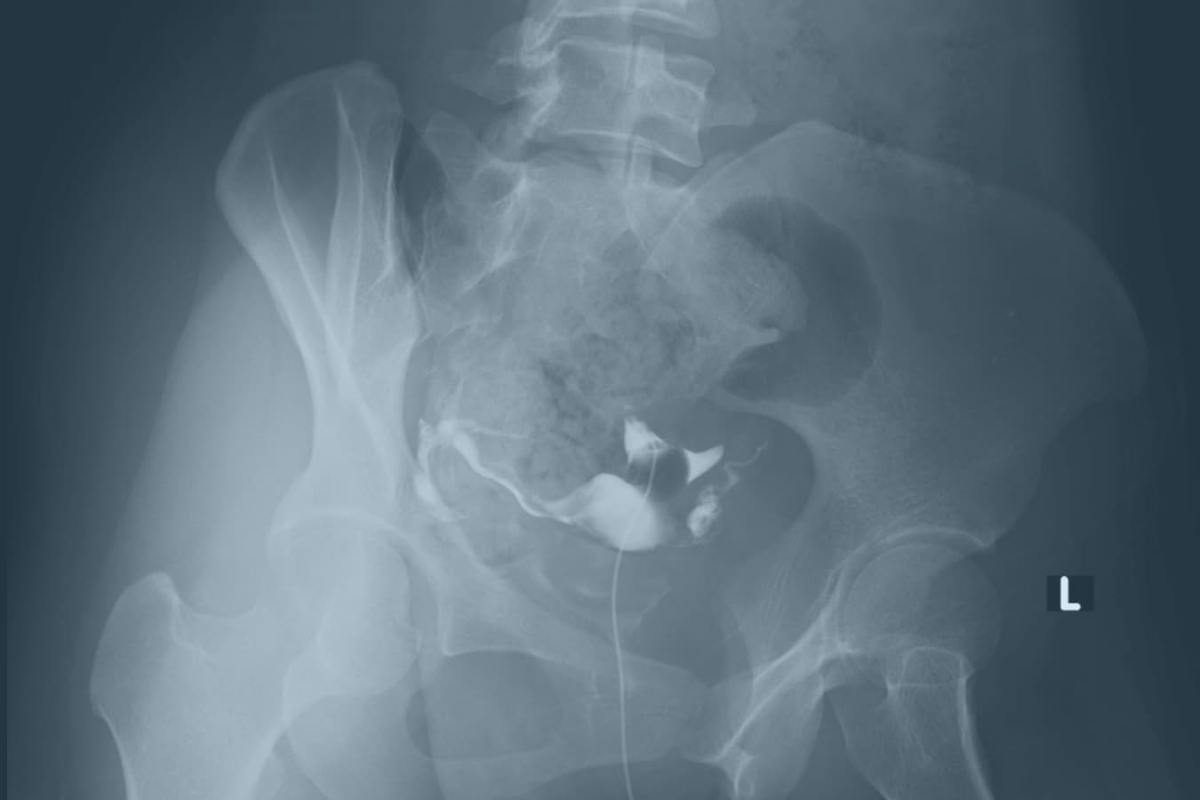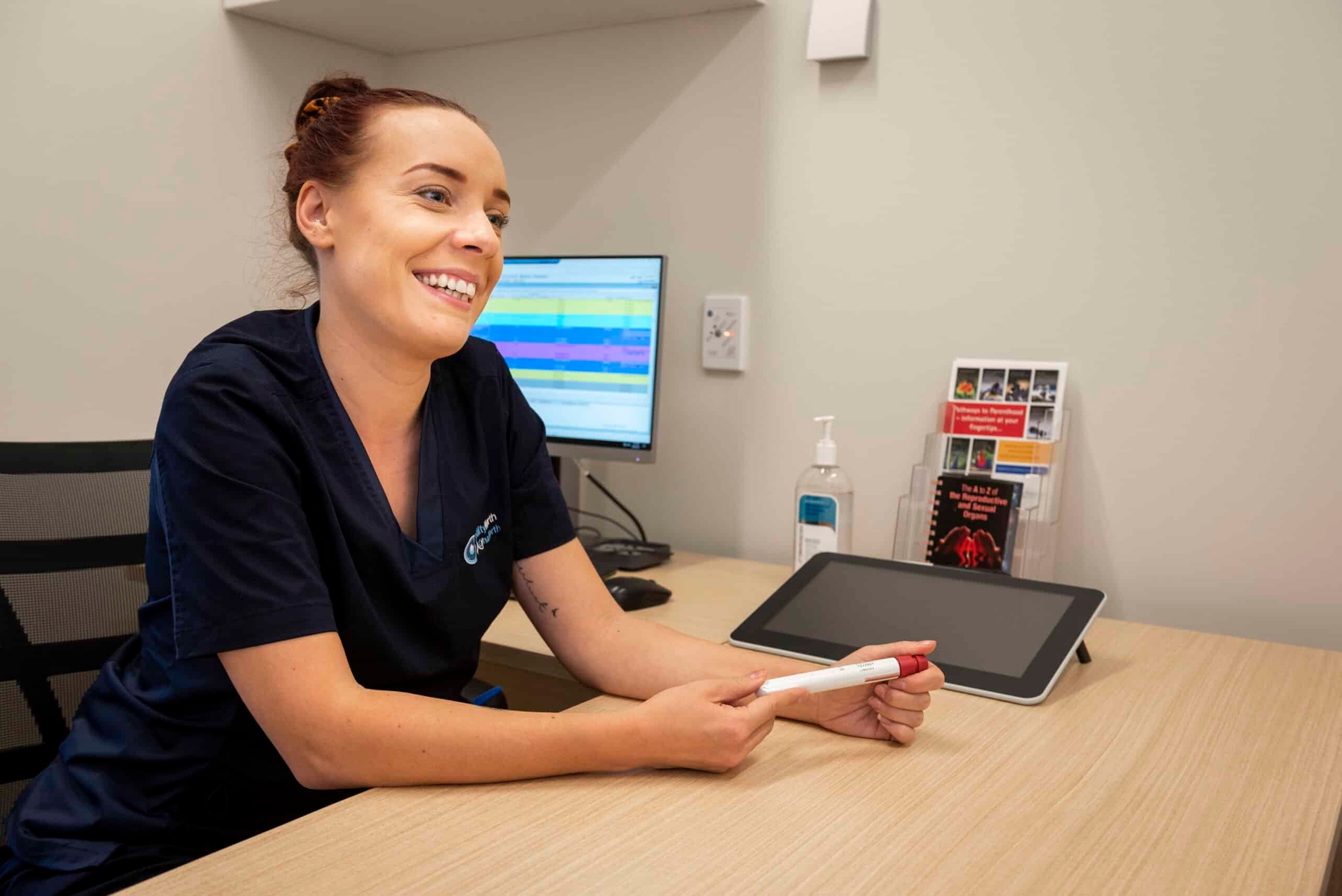Fertility Testing
Hysterosalpingogram (HSG) Testing
A specialist x-ray conducted off site to examine the uterus and fallopian tubes.

What is a hysterosalpingogram (HSG)?
A Hysterosalpingogram, or a HSG for short, is an X-ray test that is done in a radiology practice or department off-site. It involves the injection of a radio-opaque dye into the uterine cavity under pressure and using X-ray imaging to show where the dye has flowed.
What is a HSG used for?
A HSG gives really useful information about:
- The size and shape of the uterine cavity
- The contour of the walls of the cavity of the womb
- The state of the fallopian tubes
- The presence or otherwise of pelvic adhesions
As such, it is a useful part of an initial infertility assessment.
Do I need a HSG?
Any woman who is seeking medical advice because of delay in conceiving will potentially benefit from a HSG. A HSG will be particularly useful for women with:
Known uterine fibroids
The HSG will provide useful information on the size, shape and location of fibroids, and can indicate their impact on fertility.
A past history of uterine surgery
Patients with a history of uterine surgery may require an HSG to assess the impact of their surgery on the size and shape of the uterine cavity.
Pelvic infection or an undiagnosed menstrual disturbance
Pelvic infections and abnormal bleeding can result in changes to the shape and structure of the uterus and fallopian tubes. The extent of any disruption can be detected using a HSG test.
How will I feel after a HSG Test?
There is some local pelvic discomfort associated with HSGs. This comes in part from manipulation of the cervix and also from the uterus as it is stretched by the distending fluid.
What are the possible risks of a HSG?
The HSG is regarded as a very safe procedure, with less than 5% of patients experiencing any problems other than a temporary discomfort during the procedure.
Allergic reaction
Some patients may have an allergic reaction to the contrast dye.
Feeling of dizziness or fainting with associated nausea
The manipulation of the cervix may also cause a reaction that provokes a feeling of dizziness or fainting with associated nausea. This is usually a temporary sensation lasting for up to 1 hour, but it can require treatment.
Potential risk of infection
The potential risk of infection is reduced to less than 1% by the use of an antibiotic before the procedure, but should you develop increasing pelvic pain, discharge or a fever within 2 weeks of the procedure, it is important to contact the clinic immediately for prompt medical assessment and possible further antibiotic treatment.
Important to note
The procedure must be booked for a time in the reproductive cycle when there is absolutely no chance of being pregnant. This is the time from the end of a period until a woman releases an egg cell. For that reason, your HSG must be booked in the first 10 days of your cycle, or even earlier if your menstrual cycle is known to be short.






